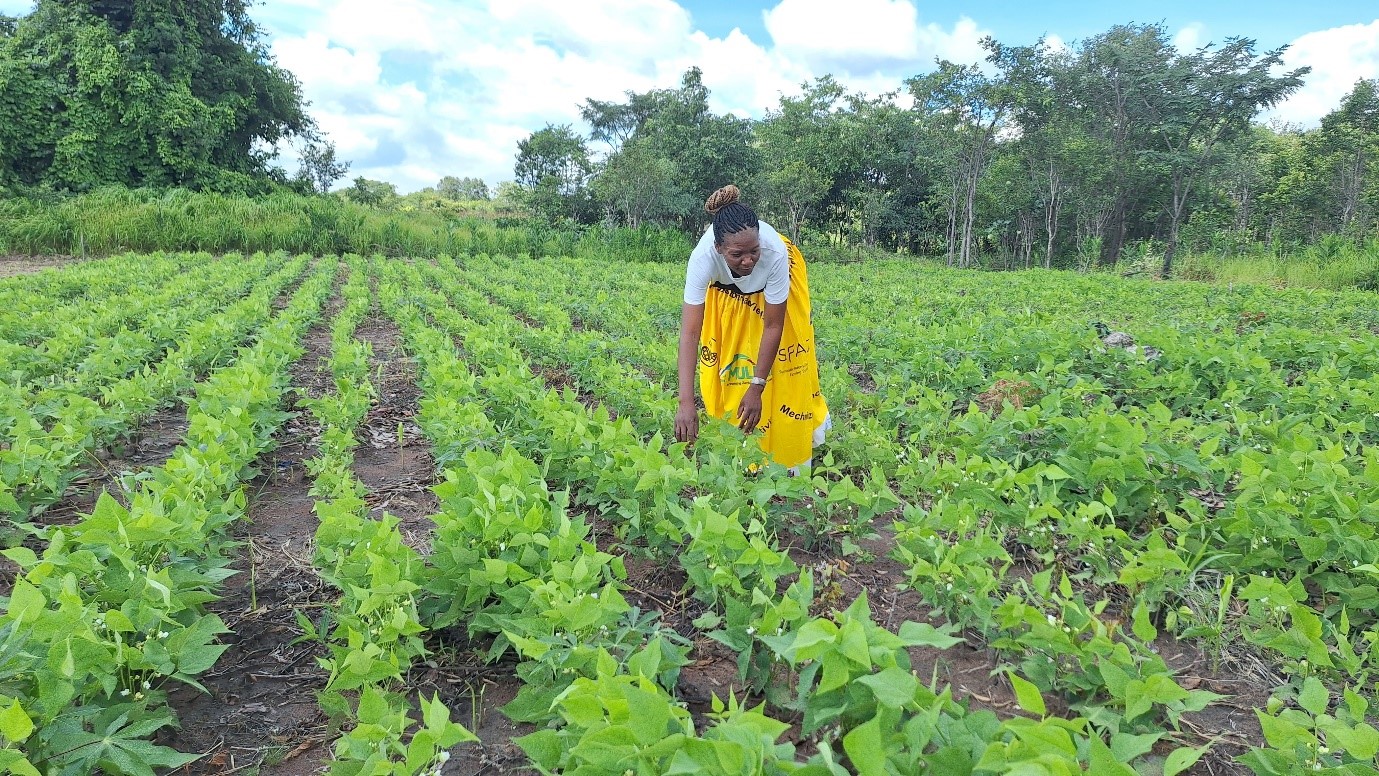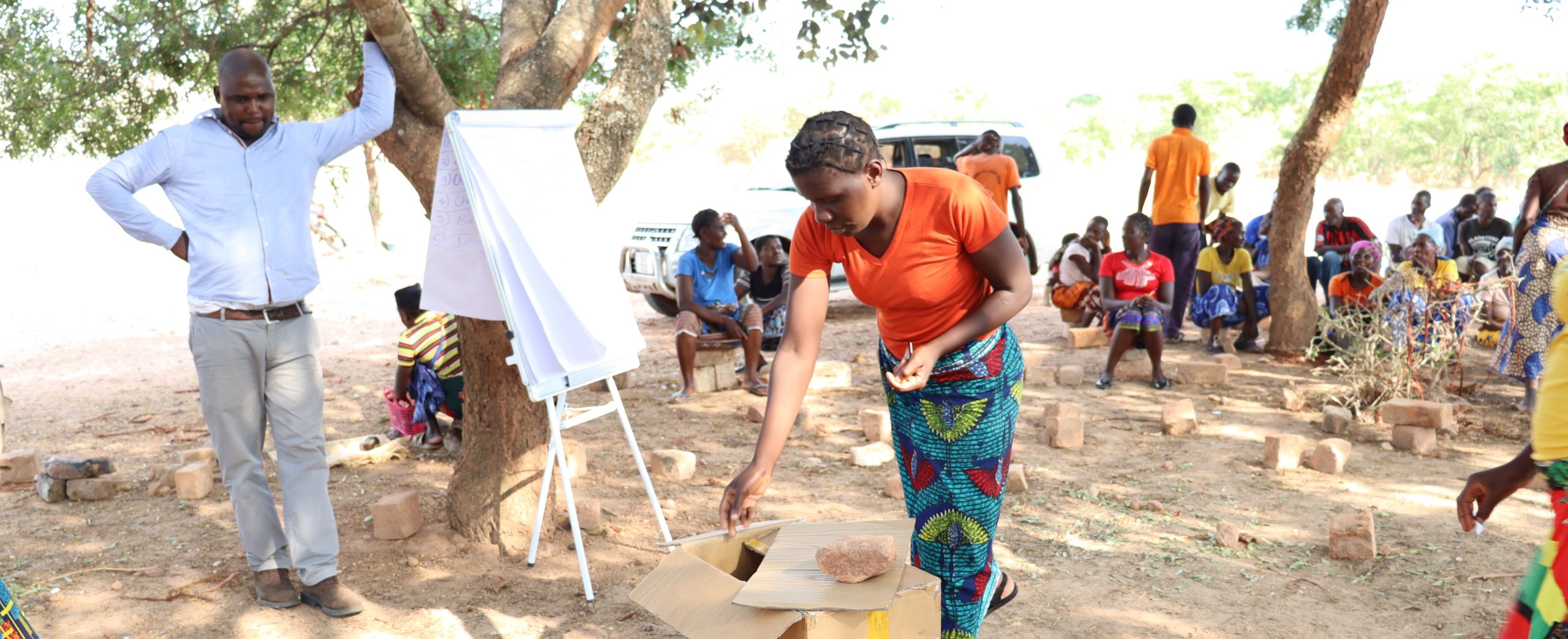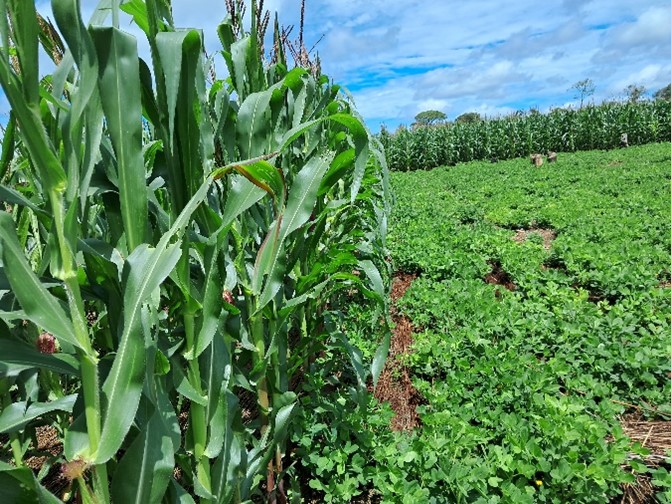For decades, women farmers like Maureen Bwalya from the Musa camp in Kasama district of northern Zambia, have upheld the tradition of cultivating cassava on ridges. These small piles of soil created by hand hoes, 30-50 cm tall and 50 cm wide are intended to reduce water logging and facilitate cassava growth. But forming row after row takes a significant amount of physical labor. Establishing ridges follows a traditional practice known as chitemene, a Bemba word which means “place where branches have been cut for a garden.”
Chitemene, a slash and burn technique once common in Zambia, involves cutting down standing trees in the Miombo woodlands, stacking the logs, and then burning them to create a thick layer of ash believed to enhance soil fertility. The ashen fields are initially cultivated with pearl millet and followed by crops like cassava. As years progressed, this method has been associated with adverse environmental impacts disrupting the ecosystem balance due to increasingly shortened fallow and recovery periods. However, with the ever-changing climate, Bwalya and other farmers recognize the need for sustainable practices that require less labor.
Alternatives to the traditional methods
Since childhood, Maureen Bwalya, a mother of seven from Musa Camp in the Kasama District of northern Zambia, has dedicated her life to cassava farming. Thriving under very low fertility and acidic soils, cassava has offered a lifeline amid the challenges of rural agriculture. When the Sustainable Intensification of Smallholder Farming Systems in Zambia (SIFAZ) project was introduced in the northern province, where cassava is a strategic crop, Bwalya saw a valuable opportunity for change to cultivate better practices that not only improve cassava yields but also replenish soil fertility in her fields.
“When I started these trials, it was a tough transition,” said Bwalya, reflecting on her journey. “Shifting from ridge planting to flat land cultivation posed its challenges as this practice was new to me. But with time, I have learned the advantages of intercropping: increased yields, less labor, and enhanced productivity, all of which enrich my farming practices.”

Implemented over the last five years by CIMMYT, in collaboration with FAO and the Ministry of Agriculture, SIFAZ aims to advance the intensification of farming practices and catalyze widespread adoption among farmers in Zambia. In the Musa camp, key partners took on the challenge of advancing better farming techniques with cassava. Their collective objective was clear: to identify methods that minimized labor intensity while maximizing yields. Through rigorous trials, including comparing flat land planting against traditional ridge systems and experimenting with intercropping cassava with common beans and groundnuts, promising results have been seen.
The outcomes yielded thus far have been nothing short of inspiring across farmers. It has become clear to farmers and researchers that cassava planted on flat land, particularly within a Conservation Agriculture (CA) framework, was not only feasible in high rainfall areas but also yielded significantly higher returns. Despite observing fewer root structures, the roots themselves proved to be robust and weighty, ultimately translating to increased productivity for smallholder farmers. Furthermore, farmers have confirmed that cassava from the CA plots tastes better than the one from the ridged portions.
“As a cassava trial implementer,” Bwalya said, “I undertook various trials exploring intercropping cassava with beans and groundnuts, across both flat and ridge systems.”
Thriving and innovating
Her six-hectare plot has become a hub of experimentation, with 0.3 hectares dedicated to the ongoing trials. Encouraged by the successes and promising yields witnessed on flat land, Maureen extended these sustainable practices to the remaining expanse, intercropping maize with cassava. Her results have been noticed, drawing the interest of over fifty neighboring farmers, inspired by her flourishing plot.
As the harvesting season approaches, Bwalya faces no shortage of opportunities to market her produce. From cassava cuttings to nutrient-rich leaves and tubers, she never runs short of eager buyers in local markets, ensuring a steady income for her family.
Navigating through the different trials across the Kasama district, pockets of adoption in some farmers’ fields are noticeable. Through collaborative partnerships and community engagement, SIFAZ strives to empower farmers with the knowledge and tools stemming from the trials to become more food secure in the face of evolving climatic challenges.
 Innovations
Innovations 
